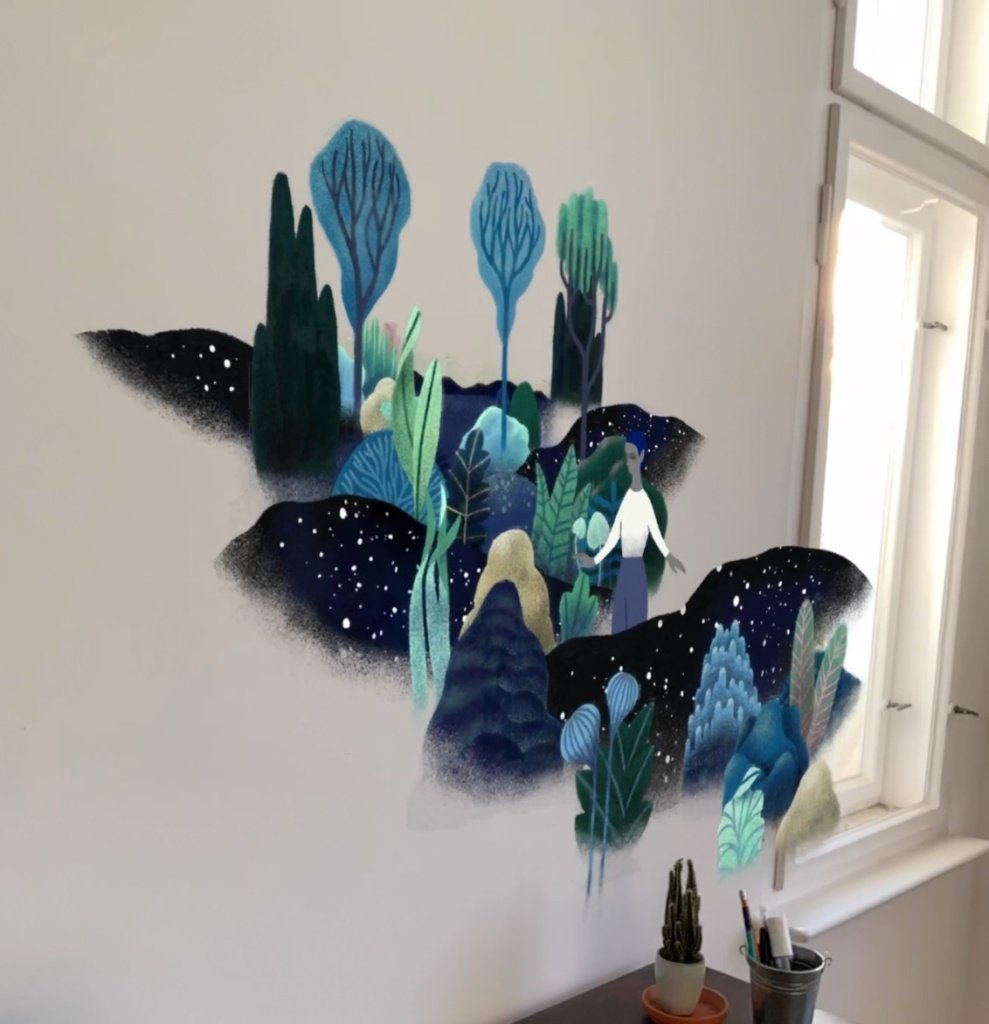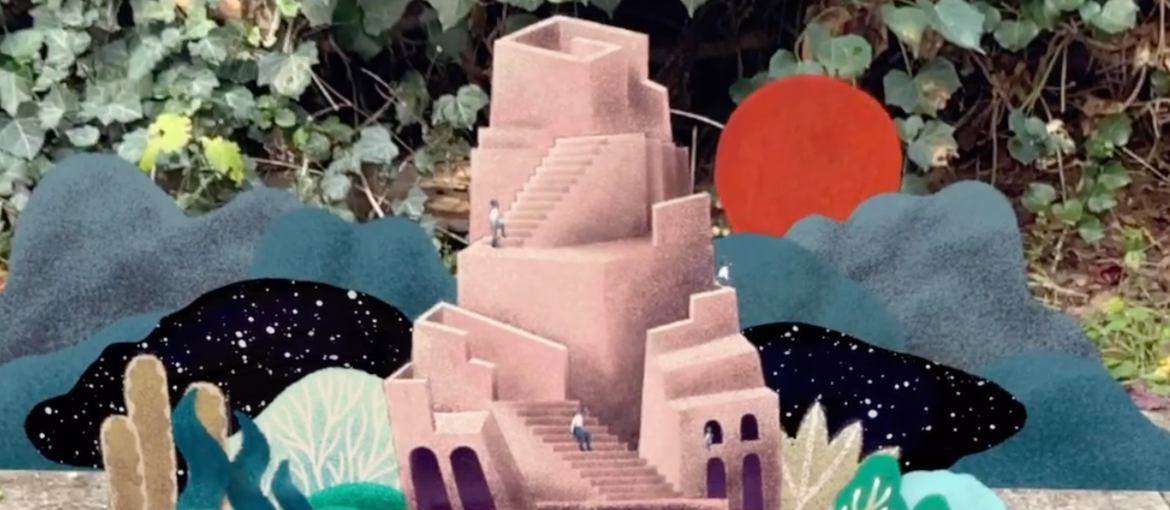Table of Contents
Artists swapping their sketch pads for a digital screen is commonplace today. But a growing number of creatives are going one step further, combining augmented reality with art to change the world around us. These illustrators, designers, and digital sculptors use augmented reality (AR) to open new realms of storytelling and self-expression.
In this post, Susi Vetter shares with us what inspires her to create AR artworks and we take a look at how AR is influencing both the artworld and online commerce.
Augmented Reality and art – exploring new realities
You’ve probably heard of AR already, but what is it actually? AR is an interactive experience based within the real world. This can take many forms, from chasing Pokémon down the street whilst playing Pokémon GO or using the iOS Measure app to gauge the size of your sofa.
Whilst AR continues to show up more frequently in our lives, the idea of combining art and AR was relatively unexplored until fairly recently. Unlike virtual reality, which requires a headset, AR works on most modern smartphones or tablets.
The rise of AR in the art world has been aided by the release of design software such as Reality Composer and Adobe Aero which enable artists to create their AR works more easily. Global brands are also accelerating the use of AR. For example, Apple ran the Today initiative at their AR[T] Labs, as well as immersive walks through their shops worldwide.
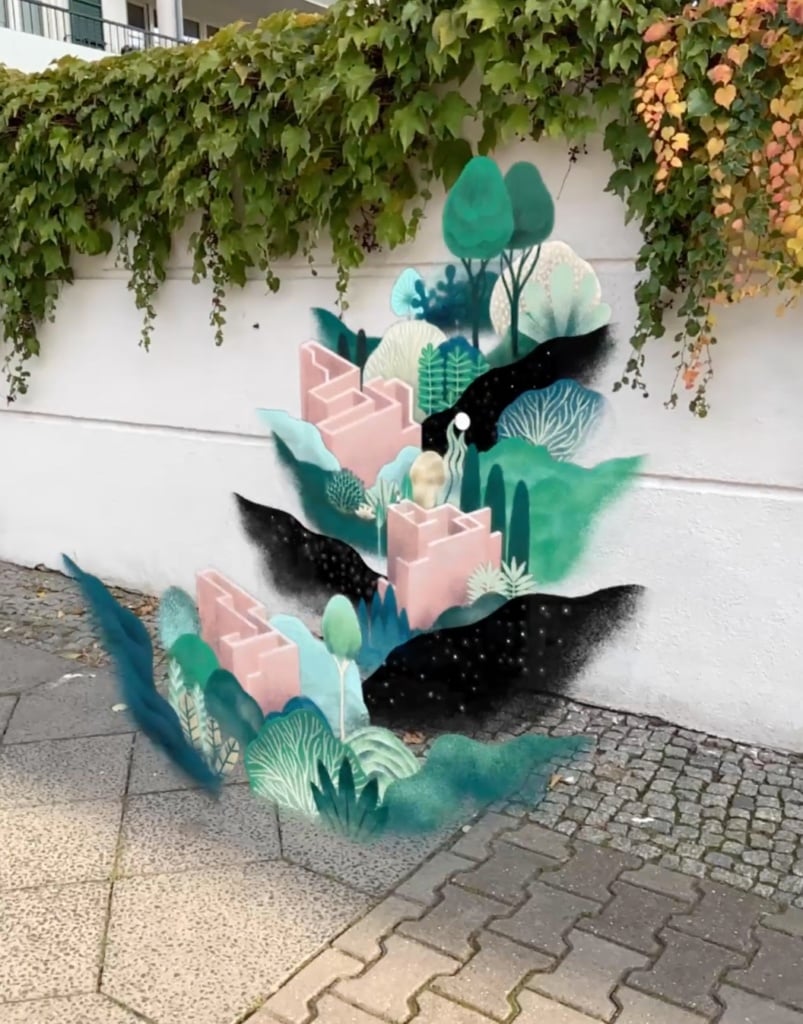
Susi Vetter – an artist combining storytelling and AR
One artist exploring AR and art is Susi Vetter. Based in Berlin, Susi is a multimedia artist and illustrator who is pushing the creative realms of AR. Her latest work blurs the lines between the digital space and real life.
Titled ‘Take me There’, Susi created a series of three illustrations during lockdown last year. The piece brings a whole new world of forests, starry night skies, and imaginary buildings to life on your screen. With her new work, Susie wanted to explore how AR can be used to tell powerful stories.
“I want to show how our idea of reality can be blurred. I drew inspiration from architecture and nature to create a window to new, surreal, magical worlds,” she says.
Susi had been toying with this idea for some time, but her project was given another angle when Covid hit. Susi used art to visualise her feelings towards world events. Isolation became a common theme in 2020, but art gave Susi the chance to go somewhere else for a while.
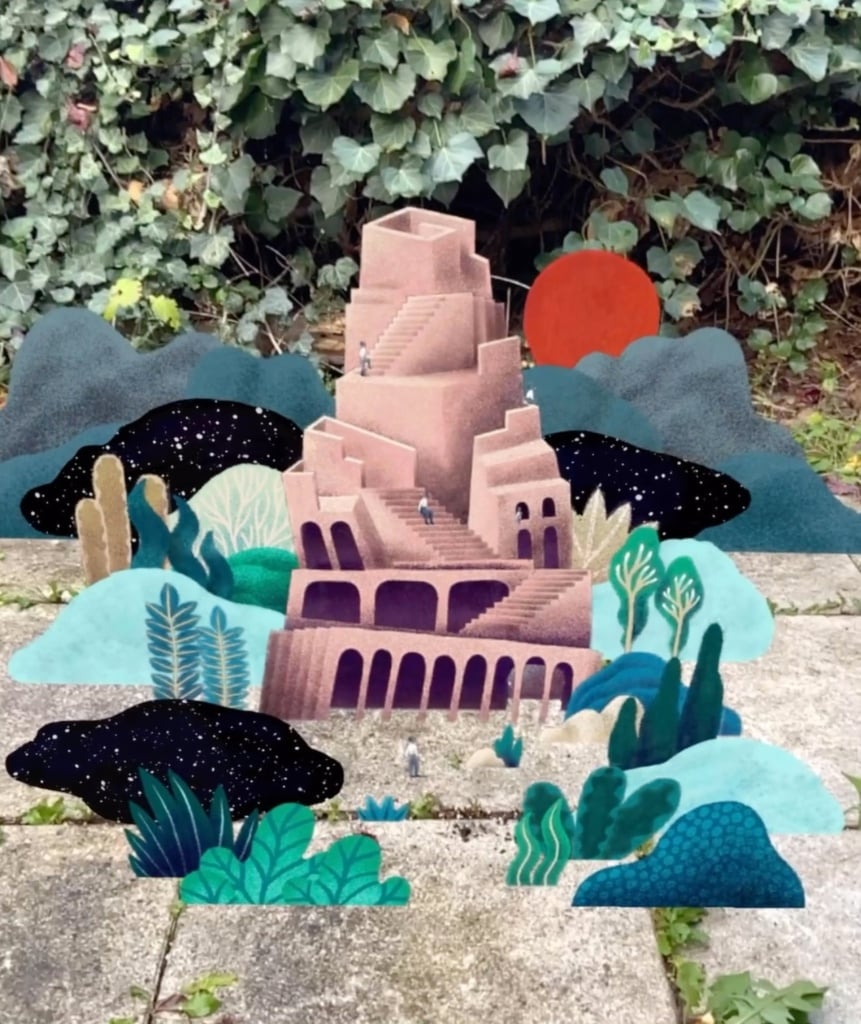
“During lockdown, AR was a way for me to escape to another place; I could dream of magical forests and surreal buildings instead,” Susi explains. “The humans in my illustrations are sometimes lost, confused, dreaming, dancing, or frozen in time.”
She found that being stuck in one place helped give her space to look at the bigger picture and slow down, which is reflected in her work.
Susi’s voyage into AR began by experimenting and playing around for fun, but it soon became part of her workflow. She uses software such as Procreate, Photoshop and After Effects to illustrate and animate. To bring her art to life, she works with Artivive, Adobe Aero, and Facebook’s Spark AR platform.
So why does Susi like to create AR designs? It’s a way to create magic.
“There’s this really special moment when you change or enhance the physical world with something virtual. I like to work with this tension in AR and focus on the process of turning a pencil sketch in the physical world to a finished AR design,” Susi explains.
To create ‘Take Me There’, Susi first set about choosing a colour pallet using mostly natural and muted hues. She then made 2D illustrations, expanding the layers beyond the limitations of a square-shaped design. Finally, she added the individual designs into Adobe Aero to bring them to life in the real world.
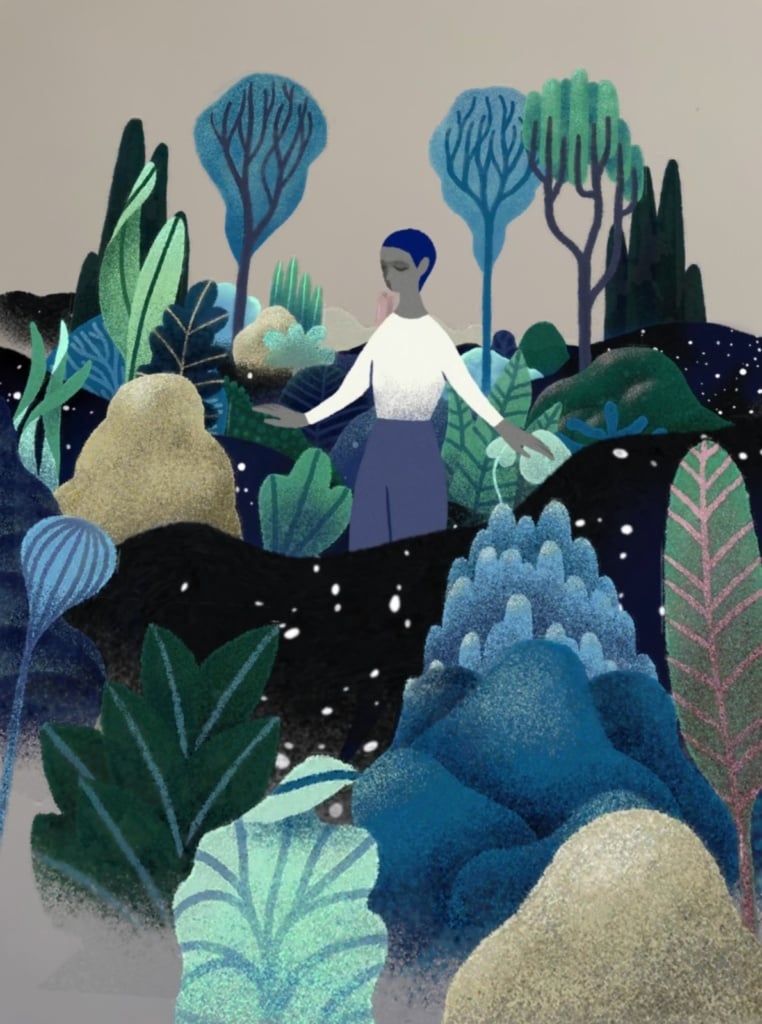
Susi always reflects on her artworks and questions how AR enhances a piece: “I ask myself how the AR layer changes the physical art, what it adds, if it is surprising or shocking, and whether it completes the artwork.”
In the future, she plans to continue to explore the realms of possibility of AR and art. However, she won’t stop there.
“The development I’m most excited about is Mixed Reality and Enhanced Reality,” she says. “One day, the virtual part of the art experience won’t be restricted to a small device like a phone or tablet.”
See more of Susi creations on her Instagram
Create your own Augmented Reality with these AR tools
Established and budding AR artists can create designs more and more conveniently with AR design apps. Familiar design software companies such as Adobe as well as new companies provide tools to create, view, and share AR creations. Just like art itself, these programmes are constantly evolving to make the design process as smooth as possible for everyone, even without any coding knowledge.
If you have an iPad and want to bring your own designs to life, uMake is the tool for you. This 3D and AR design app can be used on your phone as well as tablets so you can model, sketch and adjust 3D designs on the go.
This Adobe software is specially made as an augmented reality authoring and publishing tool to create, view and publish AR experiences. Aero lets you design within the app and even capture videos of your art so that you can share it so your creation can be viewed on iOS. You can export and share files that include all the interactive elements of your piece.
This new technology is especially developed to connect physical art with the digital space and vice versa. You can add a digital layer to a physical art space that brings viewers or visitors to another level when they view the creation behind a screen. This helps you to bring artworks to life and tell a story with a layer that can be seen with a smartphone or tablet.
This platform lets you easily augment images, objects or scenes without any previous programming skills. With the aim of making AR available to everyone, they also let you publish your designs in their Wikitude App.

Looking forward – the future of Augmented Reality
The use of Augmented Reality is predicted to continue to grow over the coming decade. Some companies have already begun implementing AR into their strategies, realising its value for the sales process and marketing. For example, Houzz has created an app that lets you see what a piece of furniture will look like in your living room before ordering.
However, this is just the tip of the iceberg for AR. In the future, we will probably see much more of it as it jumps from phone screens to our daily lives. Imagine being able to learn tasks on demand, seeing the name and job title of everyone in your office, or being able to evaluate the feelings of someone you are talking to.
As the community continues to grow and AR tools are improved, it will be interesting to see what artists like Susi Vetter create with this reality-bending medium. The use of AR in art is only just getting started.